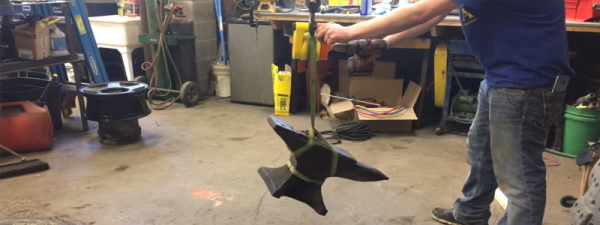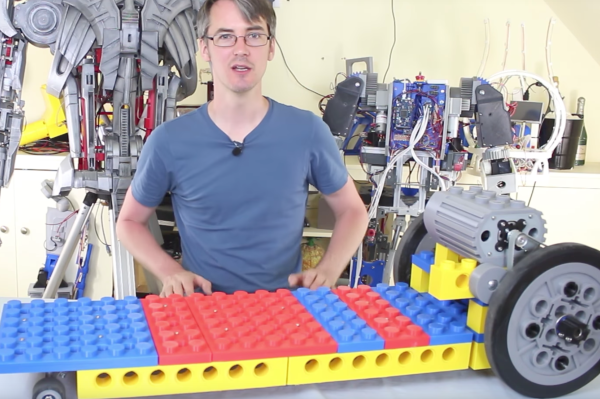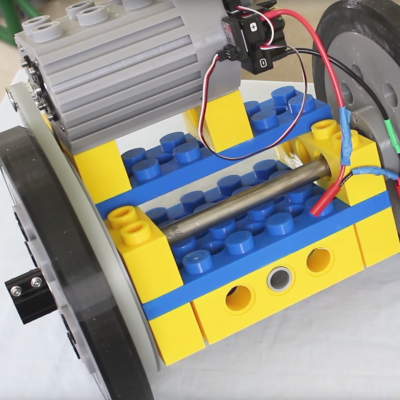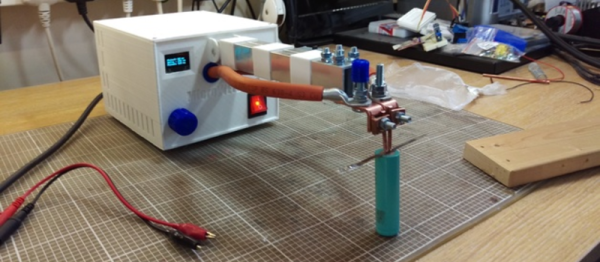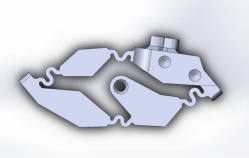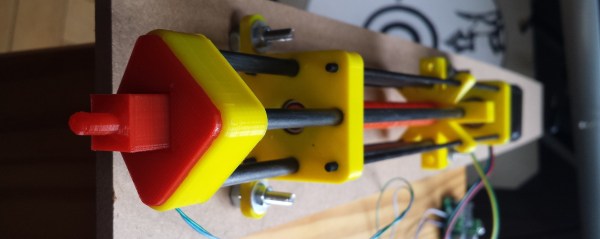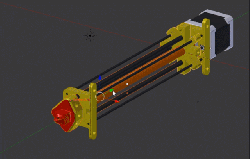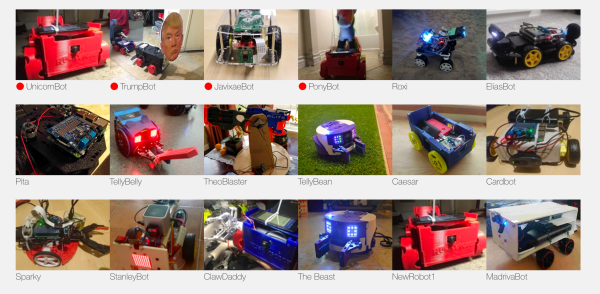How strong can you make a 3D-printed gearbox. Would you believe strong enough to lift an anvil? [Gear Down For What?] likes testing the limits of 3D printed gearboxes. Honestly, we’re amazed.
3D printing has revolutionized DIY fabrication. But one problem normally associated with 3D printed parts is they can be quite weak unless designed and printed carefully.
Using a whole roll of filament, minus a few grams, [Gear Down For What?] printed out a big planetary gear box with a ratio of 160:1 and added some ball bearings and using a drill as a crank. Setting it up on a hoist, he started testing what it could lift. First it lifted a 70 lb truck tire and then another without any issues. It then went on to lift a 120 lb anvil. So then the truck tires were added back on, lifting a combined weight of 260 lb without the gearbox breaking a sweat.
This is pretty amazing! There have been things like functional 3D-printed car jacks made in the past, however 3D-printed gear teeth are notoriously easily broken unless designed properly. We wonder what it would take to bring this gearbox to the breaking point. If you have a spare roll of filament and some ball bearings, why not give it go yourself? STL files can be found here on Thingiverse.
Continue reading “3D Printed Gearbox Lifts An Anvil With Ease”

